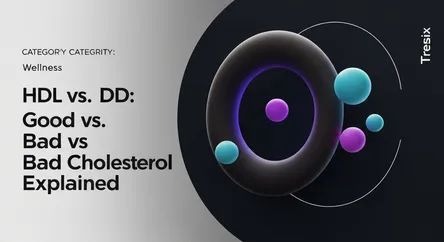Wellness
HDL vs. LDL: Good vs. Bad Cholesterol Explained

Learn the crucial difference between "good" HDL and "bad" LDL cholesterol and how managing your levels is key to preventing heart disease.
What is it?
Cholesterol is a waxy substance your body needs to build healthy cells. It circulates in your blood via proteins called lipoproteins. There are two main types: Low-Density Lipoprotein (LDL) and High-Density Lipoprotein (HDL). LDL is often called "bad" cholesterol because high levels contribute to plaque buildup in the arteries, a condition known as atherosclerosis. This can narrow blood vessels and increase risk. HDL is considered "good" cholesterol because it helps remove excess cholesterol from the arteries, transporting it to the liver where it's broken down and removed from the body.
Why is it trending?
Awareness around preventative health and cardiovascular disease keeps cholesterol in the spotlight. Heart disease and stroke are major global health concerns, and high cholesterol is a significant risk factor. Since it has no symptoms, regular screening is crucial, a fact often highlighted in public health campaigns. The constant dialogue in wellness communities about how diet, exercise, and lifestyle choices directly influence cholesterol levels ensures the topic remains relevant and widely discussed as part of proactive health management.
How does it affect people?
High LDL cholesterol negatively impacts health by causing plaque to accumulate on artery walls, which makes them hard and narrow. This buildup restricts blood flow and can lead to severe health problems, including chest pain, heart attack, and stroke. Managing cholesterol is vital for long-term cardiovascular health. People can often lower their "bad" cholesterol and raise their "good" cholesterol through lifestyle changes like a healthier diet and regular exercise, or with medication, thereby reducing their risk of these life-threatening conditions.